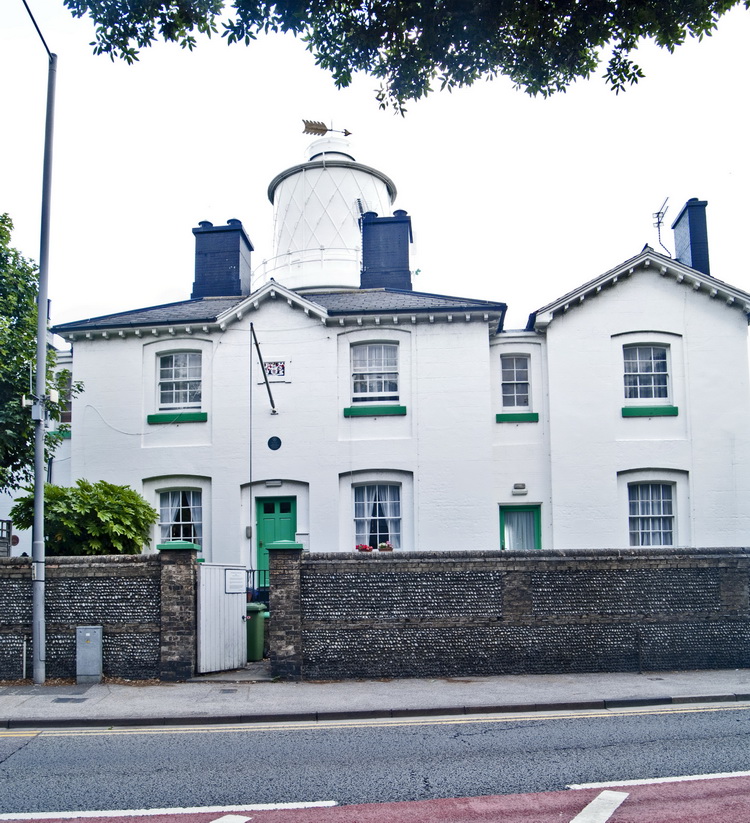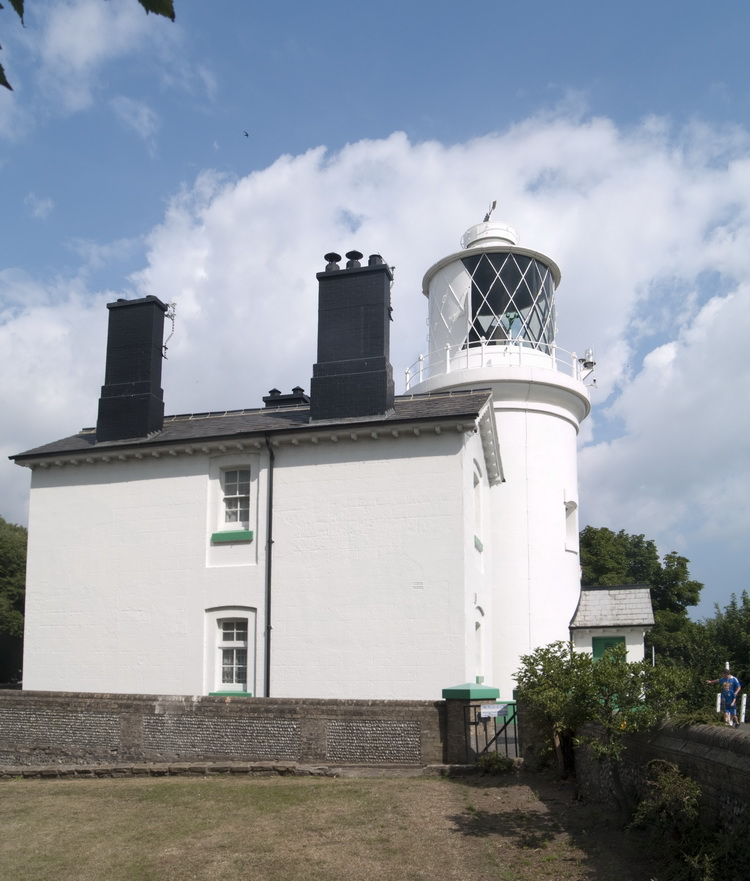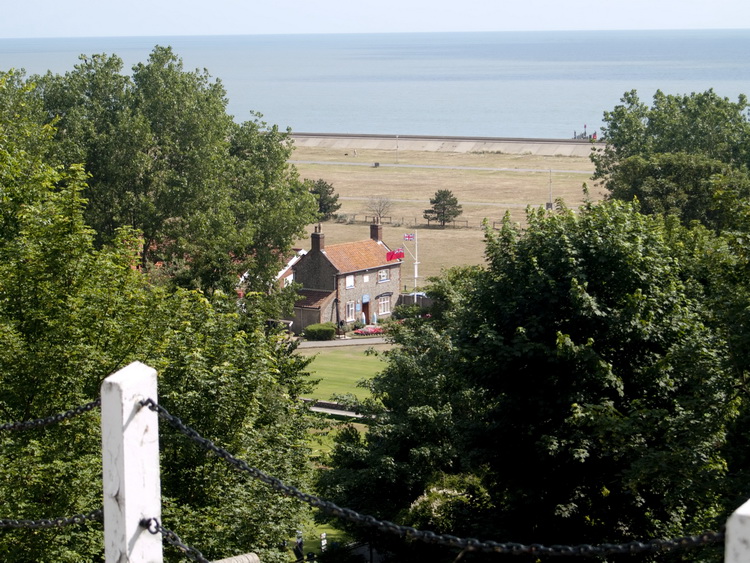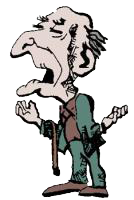
This is a working Lighthouse and it would appear that tours are not available here, hence only the three pictures, two of the light. Try waving your mouse over them.
The site has some history.
I repeat that from the excellent site of Trinity House, which is well worth visiting, in the hope that they accept the spirit of the plagiarism, as I rarely, if ever do a site with much text and am experimenting with the code.
Here is what is said on their site:
In 1609 Trinity House responded to petitions from shipowners and merchants who had lost cargoes and vessels on the dangerous sandbanks and shoals around the East coast. The proposal was to erect two towers, a high and low light, 'for the direction of ships which crept by night in the dangerous passage betwixt Lowestoft and Winterton'.

Two lighthouses were established on the low lying foreshore known as Lowestoft-ness, the illuminant being tallow candles. When the two lights were in line they led vessels through the Stamford Channel, an inshore passage used by small vessels, which no longer exists. The lighthouses were rebuilt in 1628 and again in 1676 when the rear light was erected upon the cliff as the light was no longer solely used by vessels feeling their way along the coast, but also by those approaching from far out to sea. The new High Lighthouse, which cost £300, was a substantial building of brick and stone and in order to improve the light the candles were replaced by a coal fire.
In 1706, owing to encroachment by the sea, the Low Light was discontinued. For years afterwards the shipmasters complained of the difficulty in navigating the Stamford Channel during the night time, and eventually, in 1730 it was re-established, as an oil light, burning whale oil in an open flame lamp. The new Low Light was designed to be easily moveable either on account of the encroachment of the sea or a change in the direction of the Stamford Channel.

In 1777 Trinity House experimented with reflector lights at Lowestoft. The coal fire in the high light was replaced by a new glass lantern 7ft high and 6ft in diameter. Inside this was erected a large cylinder covered with 4,000 small mirrors. These reflected the light from oil lamps arranged in a circle around them. The 'spangle light' as it was known was said to have a range of 20 miles, and was welcomed by all who saw it. However, the development of lighthouse optics at this period was making vast strides and by 1796 the spangle light had been abandoned and Argand lamps and silvered parabolic reflectors were installed at a cost of £1,000.
Following experiments with electric lighting at South Foreland Lighthouse, in 1870 the decision was taken to electrify the Lowestoft High Light. The existing tower was not considered strong enough to take the weight of the new equipment and a new tower which still stands today was built at a cost of £2,350. However before the tower was ready to receive the electrical apparatus paraffin oil became available as an illuminant, and it immediately proved itself to be so economical and efficient that it was adopted for use in the new lighthouse in preference to electricity. At the same time a new optical system was fitted having a revolving lens, and the light, which up to then had always been fixed, was made to flash at half-minute intervals. The rebuilding was completed in 1874.
By the early 1920's the Low Light had ceased to fulfil any useful function due to the disappearance of the Stamford Channel and was finally extinguished in August, 1923. The High Light was automated in 1975 and modernised in early 1997.
A little aside:
Dirty British coaster with a salt-caked smoke stack,
Butting through the Channel in the mad March days,
With a cargo of Tyne coal, Road-rails, pig-lead,
Firewood, iron-ware, and cheap tin trays.
John Masefield

